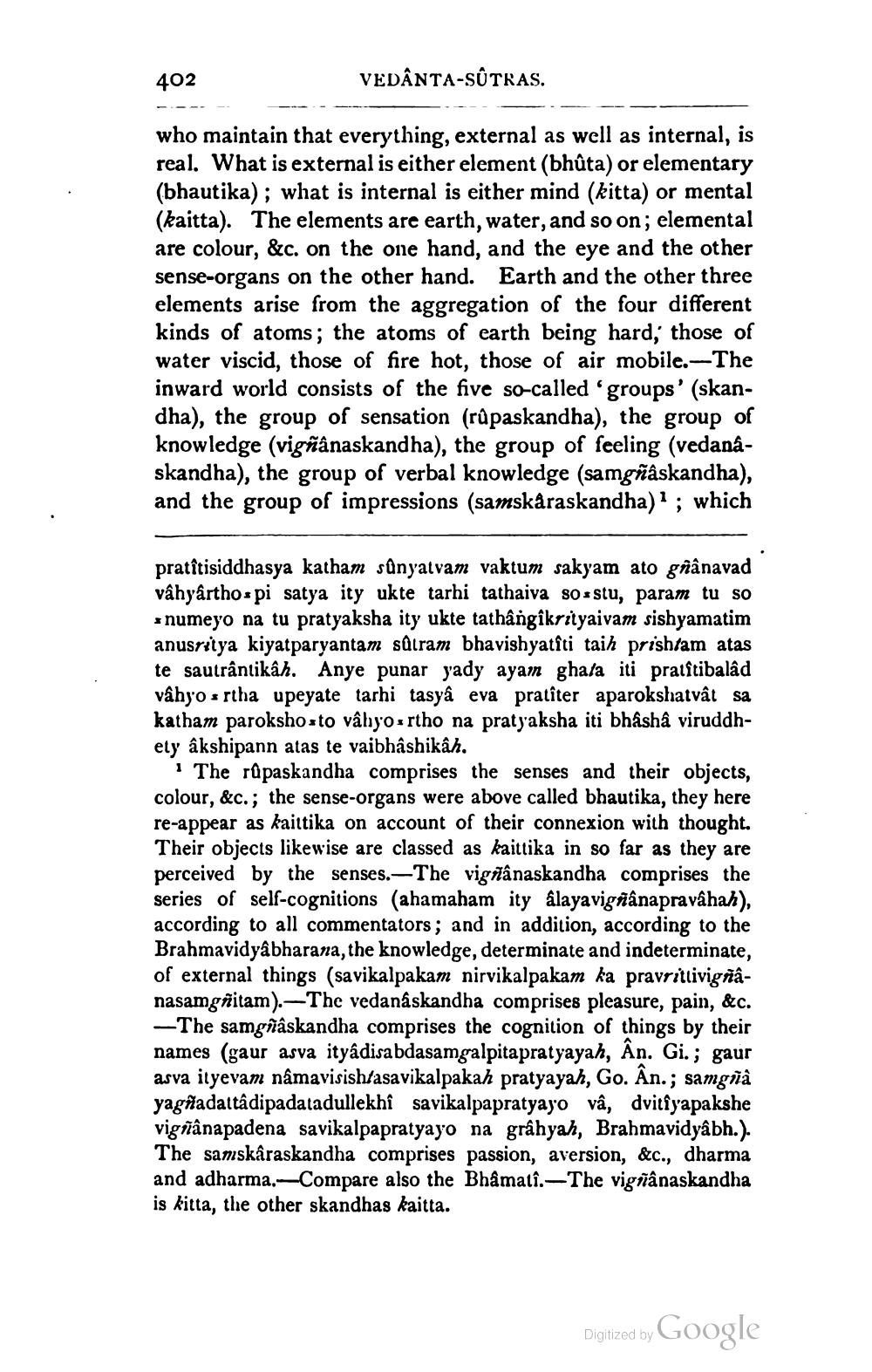________________
402
VEDÂNTA-SÛTRAS.
who maintain that everything, external as well as internal, is real. What is external is either element (bhůta) or elementary (bhautika); what is internal is either mind (kitta) or mental (kaitta). The elements are earth, water, and so on; elemental are colour, &c. on the one hand, and the eye and the other sense-organs on the other hand. Earth and the other three elements arise from the aggregation of the four different kinds of atoms; the atoms of earth being hard; those of water viscid, those of fire hot, those of air mobile.—The inward world consists of the five so-called 'groups' (skandha), the group of sensation (rūpaskandha), the group of knowledge (vigñanaskandha), the group of feeling (vedanaskandha), the group of verbal knowledge (samgñaskandha), and the group of impressions (samskåraskandha)'; which
pratîtisiddhasya katham sûnyatvam vaktum sakyam ato gñânavad vâhyârthos pi satya ity ukte tarhi tathaiva sosstu, param tu so * numeyo na tu pratyaksha ity ukte tathângîkrityaivam sishyamatim anusritya kiyatparyantam sutram bhavishyatîti taih prishtam atas te sautrântikah. Anye punar yady ayan ghala iti pratitibalad vâhyo s rtha upeyate tarhi tasya eva praliter aparokshatvat sa katham parokshosto vâhyourtho na pratyaksha iti bhâshâ viruddhety âkshipann atas te vaibhâshikâh.
The rûpaskandha comprises the senses and their objects, colour, &c.; the sense-organs were above called bhautika, they here re-appear as kaittika on account of their connexion with thought. Their objects likewise are classed as kaittika in so far as they are perceived by the senses.-The vigñanaskandha comprises the series of self-cognitions (ahamaham ity alayavigñanapravahan), according to all commentators; and in addition, according to the Brahmavidyabharana, the knowledge, determinate and indeterminate, of external things (savikalpakam nirvikalpakam ka pravritlivigñânasamgñitam).-The vedanaskandha comprises pleasure, pain, &c.
-The samgñaskandha comprises the cognition of things by their names (gaur asva ityâdisabdasamgalpitapratyayah, ân. Gi.; gaur asva ilyevam nâmavisish/asavikalpakah pratyayah, Go. An.; samgñà yagħadattâdipadatadullekhî savikalpapratyayo vâ, dvitîyapakshe vigīânapadena savikalpapratyayo na grâhyah, Brahmavidyabh.). The samskâraskandha comprises passion, aversion, &c., dharma and adharma.-Compare also the Bhâmalî.—The vigsianaskandha is kitta, the other skandhas kaitta.
Digitized by
Digized by Google




